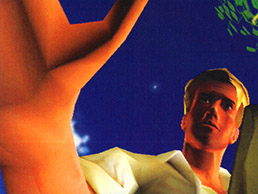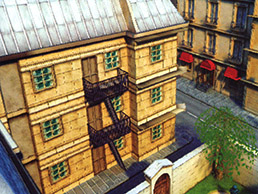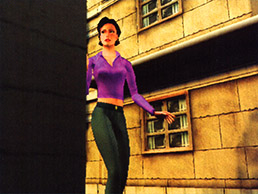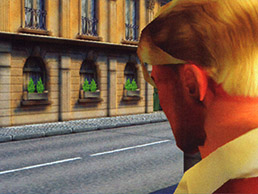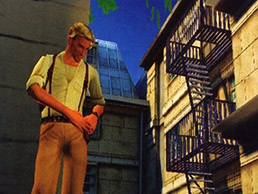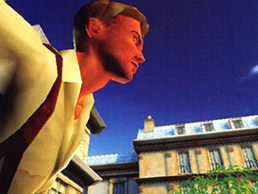
Future
Broken Sword
Point-and-click adventure games used to rule the world. Now a new, evolved version of the genre, in the shape of Broken Sword 3, promises to regain the crown.


Despite the two previous episodes of Broken Sword selling a million copies each, it’s taken some time for UK-developer Revolution Software to continue its groundbreaking series. “Point-and-click adventures were great five years ago, but now that’s all out the window,” explains managing director and series storywriter Charles Cecil. “With Broken Sword: The Sleeping Dragon, we can harness the opportunities of next-generation hardware to create a visually stunning contemporary adventure.”
One big shift in this new Sword is obvious—the game environments and characters have moved from cel-shaded 2D into lushly lit 3D. “We’ve spent a lot of time experimenting with the [Xbox] hardware, seeing what it can do,” Cecil says. “We’re interested in a style which uses a lot of contrast, combining light and shadow and putting warm and cold colors together to create visual excitement.”
And frankly, it looks stunning. Revolution is particularly proud of its shadows, which are never so dark a player can’t see what clues might be hidden in the corner of a room—vital for a game with a strong detective element.
The characters have been given a makeover to bring them into the third dimension. The hero, George Stobbart, has matured into a character with a certain air of cool. “We didn’t want to end up with a video game cliché,” Cecil says. “He’s not a broad-shouldered, square-jawed action hero.” Similarly, French photojournalist Nico Collard is sassy and sexy without crossing the line into fodder for adolescent fantasy à la Lara Croft. The development team is also working on a virtual actor system, which will allow script writers to choreograph realistic emotions via the characters through lip synch, facial animation, and body stance.
One aspect of the gameplay Cecil is keen to explain is the game’s pacing. One part of this is detective work. “I think this is one thing about adventure games that can really frustrate players,” he says. “We want to take the opposite approach. Detective work is what people enjoy about adventure games, so we make sure it moves fast. If you get stuck, we’ll give you hints.”
Another gameplay element, potentially more controversial, is the use of pre-scripted action events in a similar manner to Shenmue’s Quick-Time Events. “I thought Shenmue was interesting, but I got bored, while in Shenmue 2 the player didn’t have much control at all.” Cecil explains. “Instead of just having to press a button to trigger an event, we will be offering players choices using the action events.” The idea is that an icon map will appear, whether by pre-scripted actions or in proximity to an object the player can interact with. Using this system, a player will be able to give orders to their partner, use their inventory, or jump over a wall. “Instead of requiring a player to have the manual dexterity to press a button at the right time, we can empower them to use their minds,” Cecil says.
As for the plot, he doesn’t want to give much away at this early stage; The Sleeping Dragon isn’t due to be released until late 2003. The game starts, however, with Stobbart crash-landing his plane in the Congo jungle after a sudden electrical storm.
Meanwhile, in Paris, Collard is investigating the mysterious death of a hacker who warned of great danger for the Earth. Cecil says: “Of course, George and Nico realize they are part of the same plot, which ultimately brings them together.” Other locations include underground pyramids in Ethiopia, a gothic castle near Prague, and sleepy rural villages in England—all of which provide stunning backdrops and the perfect opportunity to put the impressive graphics engine through its paces.
